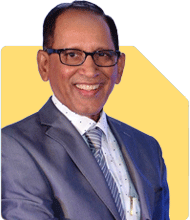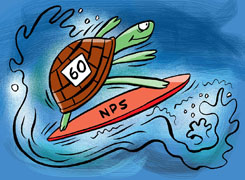Ramalingam Kalirajan |10870 Answers |Ask -Follow
Mutual Funds, Financial Planning Expert - Answered on Jun 06, 2024
He has an MBA in finance from the University of Madras and is a certified financial planner.
He is the director and chief financial planner at Holistic Investment, a Chennai-based firm that offers financial planning and wealth management advice.... more

Sir, I am 60 yrs old and my pf and pension contribution stopped last month as I retired. Both pf and pension were contributed to my account for two years after I turned 58. I am trying to claim my pf amount and activate pension, would there be any additional issues in doing so? If yes, please suggest ways
First of all, congratulations on your retirement after a dedicated 16 years of service. Claiming your provident fund (PF) and activating your pension are significant steps towards ensuring your financial stability. Understanding the process and potential issues is crucial for a smooth transition. Let’s dive into the specifics to address your concerns.
Provident Fund (PF) Claim Process
The process of claiming your PF is relatively straightforward. Your employer should have completed necessary formalities. If you face any issues, here are the key steps and considerations:
Steps to Claim PF
Submit Claim Form: Submit the PF claim form through the online EPFO portal or offline via your employer. This form is crucial for initiating the withdrawal process.
Employer Verification: Your employer verifies your details and forwards the claim to the EPFO. Ensure your employer has submitted all necessary documents.
EPFO Processing: The Employees’ Provident Fund Organisation (EPFO) processes the claim. This might take a few weeks. Regularly check the status on the EPFO portal.
Common Issues and Solutions
Incorrect Details: Ensure all your personal details are correct in the EPFO records. Any discrepancies can delay the process.
Incomplete Documents: Make sure all required documents are complete and correctly filled. Missing documents can lead to claim rejection.
Employer Delay: Sometimes employers delay the verification process. Regular follow-ups can expedite the process.
Activating Your Pension
Activating your pension is a crucial step towards securing your post-retirement income. Understanding the eligibility criteria and process is essential.
Pension Eligibility Criteria
Age Requirement: You are eligible for pension once you reach 58 years. Since you are now 60, you meet this requirement.
Service Duration: You must have completed a minimum of 10 years of service. With 16 years of service, you meet this criterion comfortably.
Steps to Activate Pension
Submit Pension Claim Form: Similar to the PF claim, submit the pension claim form. This can be done online or offline through your employer.
Verification and Processing: Your employer verifies the form and forwards it to the EPFO. The EPFO processes the claim and activates your pension.
Pension Payment: Once activated, the pension amount is credited to your designated bank account regularly.
Potential Issues with Post-58 Contributions
Your concern about employer contributions to your pension post-58 years is valid. Let's explore this in detail.
Regulatory Guidelines
EPFO Guidelines: The EPFO allows contributions to the pension scheme up to 58 years. Contributions beyond this age require specific conditions.
Employer Compliance: Employers should ideally stop contributing to the pension fund post-58. Contributions beyond this can complicate the withdrawal process.
Possible Complications
Claim Rejection: If the EPFO identifies contributions post-58 without proper conditions, it might complicate your claim. Proper documentation can mitigate this risk.
Documentation Issues: Ensure that your employer provides necessary documentation to justify post-58 contributions. This can include special permissions or extensions.
Solutions and Recommendations
Addressing potential issues proactively can smoothen your claim process. Here are some steps to consider:
Verify Contribution Details
Check Records: Verify your PF and pension contribution records. Ensure there are no discrepancies in the contribution timeline.
Employer Clarification: Seek clarification from your employer regarding post-58 contributions. Obtain any special permissions or extensions in writing.
Documentation and Communication
Document Everything: Keep a record of all communications and documents related to your PF and pension contributions. This helps in case of any disputes.
Regular Follow-ups: Regularly follow up with your employer and EPFO. This ensures that your claim process is on track and any issues are addressed promptly.
Seek Professional Guidance
Certified Financial Planner (CFP): Consult a CFP for personalized guidance. They can provide expert advice on navigating the PF and pension claim process.
Ensuring Financial Security Post-Retirement
Beyond claiming your PF and activating your pension, ensuring long-term financial security is crucial. Let’s explore some strategies.
Diversify Your Investments
Diversification spreads risk across different assets, enhancing your financial stability. Consider the following:
Mutual Funds: Invest in mutual funds for potential higher returns. Diversified funds can balance risk and returns effectively.
Fixed Deposits: Fixed deposits offer stability and guaranteed returns. They can be a safe investment for post-retirement income.
Regular Income Streams
Ensuring regular income streams post-retirement is essential. Here are some options:
Systematic Withdrawal Plans (SWP): SWPs from mutual funds provide regular income. You can withdraw a fixed amount periodically.
Senior Citizens Savings Scheme (SCSS): SCSS is a government-backed scheme offering regular interest payouts. It is a safe and reliable option.
Health and Emergency Funds
Having an emergency fund is crucial for unexpected expenses. Consider the following:
Health Insurance: Ensure you have adequate health insurance coverage. Medical expenses can be a significant burden post-retirement.
Emergency Savings: Maintain an emergency fund equivalent to 6-12 months of expenses. This provides a financial cushion in emergencies.
Estate Planning
Planning your estate ensures your assets are managed and distributed as per your wishes. Consider these steps:
Create a Will
Legal Document: A will is a legal document specifying asset distribution. Ensure it is legally compliant and clearly written.
Executor: Appoint a reliable executor to manage your estate. This ensures your wishes are carried out effectively.
Nomination and Legal Heirs
Nomination: Ensure all your financial accounts have nominations. This simplifies the transfer process for your heirs.
Legal Heirs: Clearly define legal heirs in your will. This avoids disputes and ensures smooth asset distribution.
Emotional and Social Well-being
Retirement is not just about financial security. Emotional and social well-being are equally important.
Stay Active
Physical Activity: Regular physical activity keeps you healthy and active. Engage in exercises suitable for your age and health condition.
Social Engagement: Stay socially active by participating in community activities. This helps in maintaining a positive mindset.
Pursue Hobbies
Hobbies and Interests: Pursue hobbies and interests that you enjoy. This keeps you engaged and provides a sense of fulfillment.
Volunteering: Consider volunteering for causes you care about. It gives a sense of purpose and helps in giving back to the community.
Continuous Learning
Lifelong learning keeps your mind sharp and engaged. Consider the following:
Courses and Workshops: Enroll in courses and workshops on topics of interest. Many institutions offer online and offline options.
Reading and Research: Regular reading and research keep you informed. It can be a rewarding and fulfilling activity.
Conclusion
Navigating the PF and pension claim process post-retirement can be challenging but manageable. Ensuring proper documentation, regular follow-ups, and seeking professional guidance are key. Diversifying investments, planning for regular income, and ensuring emotional well-being contribute to a secure and fulfilling retirement. Remember, this phase of life is a new beginning. Embrace it with a positive mindset and proactive planning.
Best Regards,
K. Ramalingam, MBA, CFP,
Chief Financial Planner,
www.holisticinvestment.in
You may like to see similar questions and answers below
Ramalingam Kalirajan |10870 Answers |Ask -Follow
Mutual Funds, Financial Planning Expert - Answered on Jun 06, 2024
Reetika Sharma |417 Answers |Ask -Follow
Financial Planner, MF and Insurance Expert - Answered on Oct 10, 2025
Dr Dipankar Dutta |1837 Answers |Ask -Follow
Tech Careers and Skill Development Expert - Answered on Dec 05, 2025
Dr Shyam Jamalabad |108 Answers |Ask -Follow
Dentist - Answered on Dec 05, 2025
Dr Shyam Jamalabad |108 Answers |Ask -Follow
Dentist - Answered on Dec 05, 2025
Dr Shyam Jamalabad |108 Answers |Ask -Follow
Dentist - Answered on Dec 05, 2025
Dr Dipankar Dutta |1837 Answers |Ask -Follow
Tech Careers and Skill Development Expert - Answered on Dec 05, 2025
Ulhas Joshi |280 Answers |Ask -Follow
Mutual Fund Expert - Answered on Dec 05, 2025
Dr Dipankar Dutta |1837 Answers |Ask -Follow
Tech Careers and Skill Development Expert - Answered on Dec 04, 2025
Ravi Mittal |676 Answers |Ask -Follow
Dating, Relationships Expert - Answered on Dec 04, 2025
Anu Krishna |1745 Answers |Ask -Follow
Relationships Expert, Mind Coach - Answered on Dec 04, 2025
Anu Krishna |1745 Answers |Ask -Follow
Relationships Expert, Mind Coach - Answered on Dec 04, 2025




























